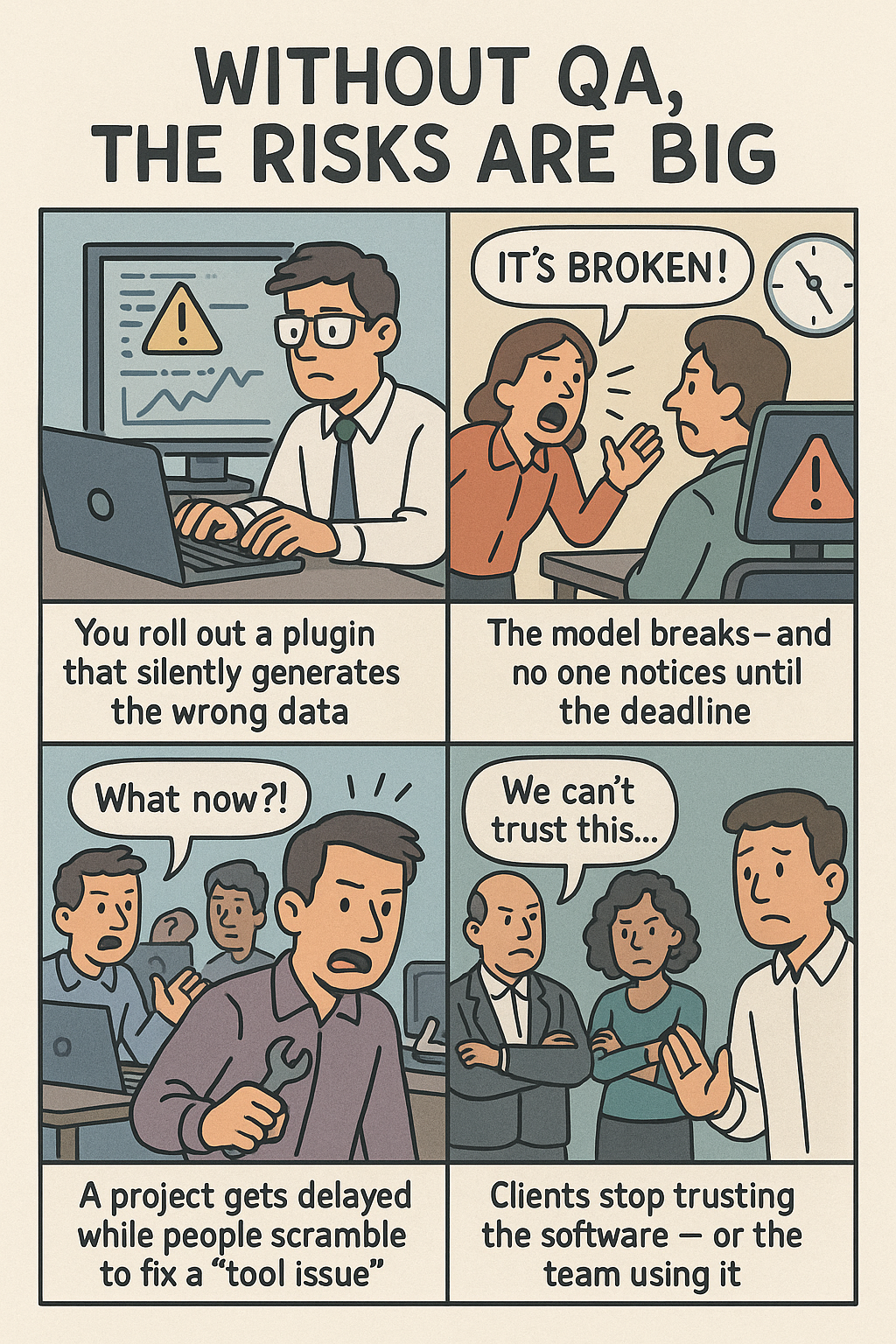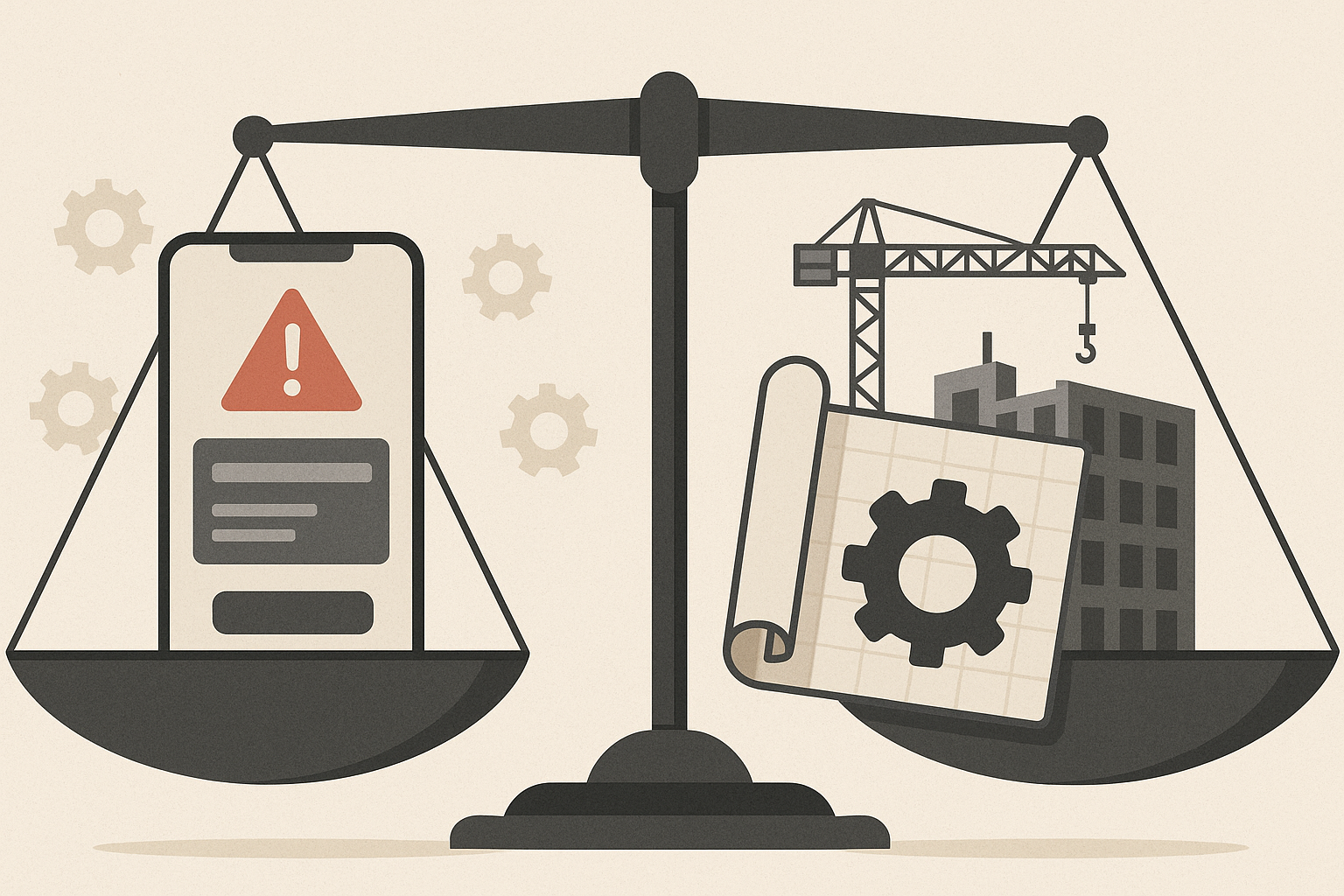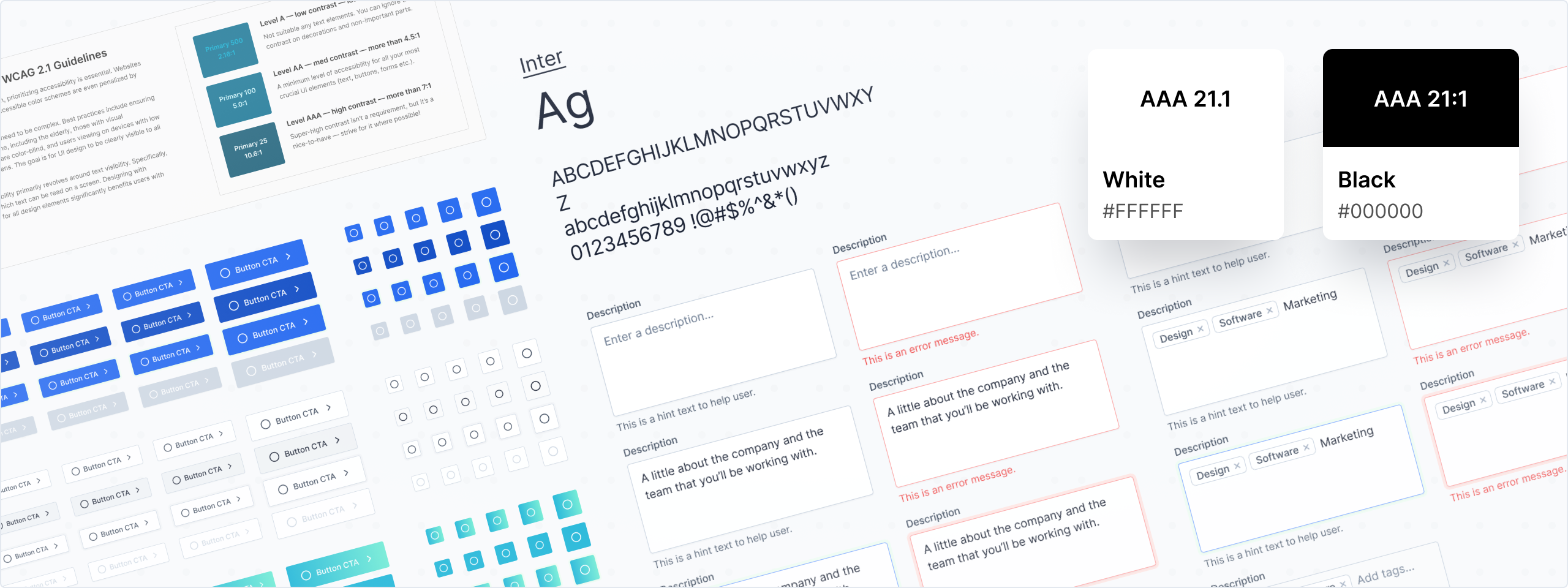When we talk about software quality, most people instantly think of mobile apps. They think of crashes, glitches, or that one update that broke everything for a week. It’s easy to see why - mobile apps are everywhere, and we expect them to just work.
But what often gets overlooked is the software behind the scenes in industries like architecture,
engineering, and construction (AEC). We’re talking about plugins for Revit, AutoCAD, and other BIM
platforms - the tools that help design the buildings we live and work in.
Here’s the thing: a bug in a plugin used by architects or engineers isn’t just annoying. It can
delay projects, cost thousands in rework, or even affect building safety. So yes - QA in AEC
software matters just as much as QA in your favorite app. Maybe more.
These Plugins Aren’t Just “Nice to Have” - They’re Part of the Workflow
Plugins for platforms like Revit and AutoCAD are everywhere in modern AEC workflows. They automate
boring, repetitive tasks. They help apply building codes. They connect models to databases or
reporting tools. They save time. A lot of time.
But because they’re so tightly integrated into real projects, they can do real damage when
something goes wrong.
Let’s say your plugin generates room layouts based on square footage and fire safety regulations. If
there’s a bug in the logic - just a small one - the whole layout might end up violating code. That
bug might not even cause an error message. Everything might look fine. Until the plans are reviewed…
or worse, built.
Fixing that mistake? It could mean scrapping work, paying overtime, delaying inspections, and
explaining to the client why their timeline just got pushed back.
AEC Isn’t Just Code - It’s Concrete, Steel, and Dollars
The difference between mobile apps and AEC tools comes down to this:
A bug in an app might annoy someone.
A bug in AEC software could halt construction.
Plugins in AEC don’t live in a vacuum. They influence real-world decisions - where walls go, how
systems are routed, what gets built. If a plugin places a duct too close to a beam, or labels rooms
incorrectly in documentation, that error can echo all the way into fabrication, delivery, and
installation.
That’s why quality assurance isn’t optional. It’s essential.
Testing AEC Software Is a Whole Different Game
Let’s be honest - testing in this space is tough. AEC tools are complex, and no two projects are
exactly the same. One client uses custom templates. Another uses non-English naming conventions.
Someone’s got 20 plugins running at once. Someone else is still on Revit 2022.
Your QA team has to test not just whether your plugin works - but whether it works in the wild:
⦁ With different versions of Revit or AutoCAD
⦁ In huge, messy real-world models
⦁ Alongside other plugins
⦁ With thousands of unique elements and parameters
⦁ Under pressure, in real production workflows
If your plugin crashes Revit when the user has 10 view templates and 5 linked models - that’s not a
rare edge case. That’s Tuesday.
What Good QA Looks Like for AEC Plugins
Here’s what happens behind the scenes when a plugin is truly tested the right way:
🧠 The logic gets tested
All those rules, formulas, and conditions? We run them through their paces - not just with perfect data, but with edge cases too.
🧪 It’s tested with Revit and AutoCAD We make sure it behaves well with the platform, across
different versions and updates. APIs change, and so does the risk.
🧩 It plays nice with the model That means testing on actual BIM files — checking if it modifies
geometry correctly, keeps data intact, and doesn’t corrupt anything along the way.
🖱️ The interface gets a sanity check QA clicks all the buttons you might click - and some you
hopefully never will - just to make sure it all works, looks clean, and doesn’t freeze up.
⚡ It holds up under pressure What happens when you run it in a 600MB model with 15 linked
files? Does it hang? Does it crash? Does it slow the whole team down? QA finds out before your users
do.
Without QA, the Risks Are Big
When QA gets skipped or rushed, here’s what can happen:
⦁ You roll out a plugin that silently generates the wrong data
⦁ The model breaks - and no one notices until the deadline
⦁ A project gets delayed while people scramble to fix a “tool issue”
⦁ Clients stop trusting the software - or the team using it
And once trust is lost, it’s hard to get back.
QA Isn’t Just Bug Hunting - It’s Trust Building
Great QA isn’t about being paranoid. It’s about building confidence - in your product, your team,
and your brand.
In AEC, that trust is everything. When someone installs your plugin and runs it on a live model,
they’re putting part of their project in your hands. That’s a big deal.
And if you’re selling enterprise solutions, trust is part of the pitch. Clients want to know:
⦁ How do you test?
⦁ What Revit versions do you support?
⦁ How fast do you fix bugs when something goes wrong?
If you’ve got strong QA in place, those questions are easy to answer. That’s not just good support - it’s a competitive edge.
Let’s talk about building your next AEC plugin with QA that’s battle-tested — not bolted on.
Final Thoughts
Software bugs are never fun. But in AEC, they can be expensive, stressful, and dangerous. That’s why
quality assurance isn’t just some internal checklist - it’s part of delivering tools that actually
help, not hurt, the people building the world around us.
So if you’re building plugins for the AEC industry, make QA a priority. Your users, their clients,
and maybe even their construction crews will thank you for it.

Yegor
Quality Assurance / Civil Engineer







